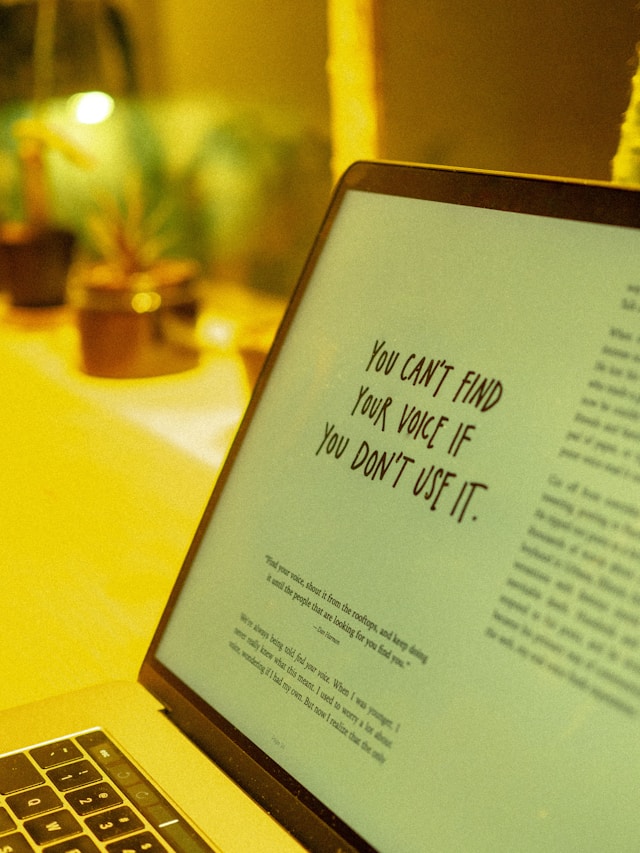Have you ever held back an idea or opinion because you weren’t sure if it mattered? Many people underestimate the value of their own voice, believing that what they have to say isn’t important or worthy of attention. Yet, every perspective is shaped by unique experiences, insights and understanding. Your voice deserves to be heard, not only because it holds value but because withholding it deprives the world of a perspective only you can offer.
Confidence in your abilities to go after your goals can sometimes be difficult to find or keep.
It can sometimes take time to discover the confidence you have inside you. This can be especially true if you are trying something new.
I have a program that can help you to discover what is holding you back from achieving your goals as well as help you set an attainable goal related to where you are in your life and where you are trying to be.
This program also works with you to build up your confidence in being able to reach your goal.
You can find out more about this program at Confidology, a funny name but a serious program.
You can contact me to talk about this or any other aspect of confidence and success at michael@coachmichaelw.com
Visit the site and read through the program description.
If you are not ready to commit to a full program, I have a self-paced course on Udemy that may be of interest. You can find out about the course and register at Confidence and Motivation Development and Maintenance
Each individual carries a distinct combination of knowledge and experiences that shape their view of the world. This uniqueness makes your voice irreplaceable. Imagine a team tackling a complex problem. If only one or two people contribute, the solution is limited to their experiences and expertise. When everyone shares their perspective, the range of ideas expands, often leading to better outcomes. Your input matters not just to you but to those around you who can benefit from your insights.
The hesitation to speak up often stems from self-doubt. It’s easy to believe that others know more or that your opinion isn’t as insightful. Yet, this mindset ignores the fact that even the most experienced individuals don’t have all the answers. Your contribution could be the missing piece to a larger puzzle. Speaking up isn’t about proving you’re the smartest person in the room — it’s about adding to the conversation in a meaningful way.
Believing in the worth of your voice doesn’t mean dismissing others’ perspectives. Collaboration thrives when everyone feels empowered to contribute. Respecting your own ideas while remaining open to those of others creates a balanced and dynamic dialogue. This balance fosters creativity and mutual respect, encouraging others to value your input as much as you value theirs.
Actionable Step: Reflect on and Reaffirm Your Value
Take a moment to think about a time when your input made a difference. This could be a small moment, like offering a helpful suggestion to a friend, or a larger one, like presenting a successful idea at work. Write down what you said and the impact it had. Reflecting on these moments reminds you of the value you bring to conversations and decisions.
To further build confidence, identify areas where you have unique insights or expertise. These might be skills you’ve developed, experiences you’ve had or interests you’re passionate about. Recognizing your strengths helps you see the unique contributions you can offer. The next time you hesitate to speak up, remind yourself of these strengths and trust in their value.
Overcoming the fear of judgment is another key step in embracing your voice. People often worry about how they’ll be perceived, but most of these fears are unfounded. Others are far less critical than we imagine, and they’re often more focused on their own thoughts than on judging yours. By shifting your focus from how you might be perceived to the value of what you’re saying, you free yourself from unnecessary anxiety.
Every voice carries the potential to inspire change, spark creativity or solve problems. Whether you’re sharing an idea, asking a question or advocating for yourself, your contribution matters. The more you practice expressing yourself, the easier it becomes to recognize the power and importance of your voice. Speaking up isn’t just about being heard — it’s about creating a space where your thoughts and ideas can make an impact.
To talk about any aspect of success or working with a Life Coach to help you to achieve success, you can book a 30-minute call by clicking on the blue button below.
Don’t try to do all of this by yourself, ask and receive the guidance that can get you moving towards your own success.
Nothing happens until action is taken.
To your success.
Michael
P.S Don’t forget to visit Confidology to learn more about the program. If you are not ready to commit to a full program, I have a self-paced course on Udemy that may be of interest. You can find out about the course and register at Confidence and Motivation Development and Maintenance
P.P.S if you want to find out more about my programs just check out the site Confidence and Life Coaching
P.P.P.S. If you enjoy reading these articles on my blog, I have more books that have more of this type of information that you can find out more about at Books to Read. You can buy these ebooks at many on-line book stores. The links to the bookstores are at the link above.
If you have an Amazon Kindle account, there are different books at Amazon – Michael W (author)
Photo by Hussein Abdullah on Unsplash






